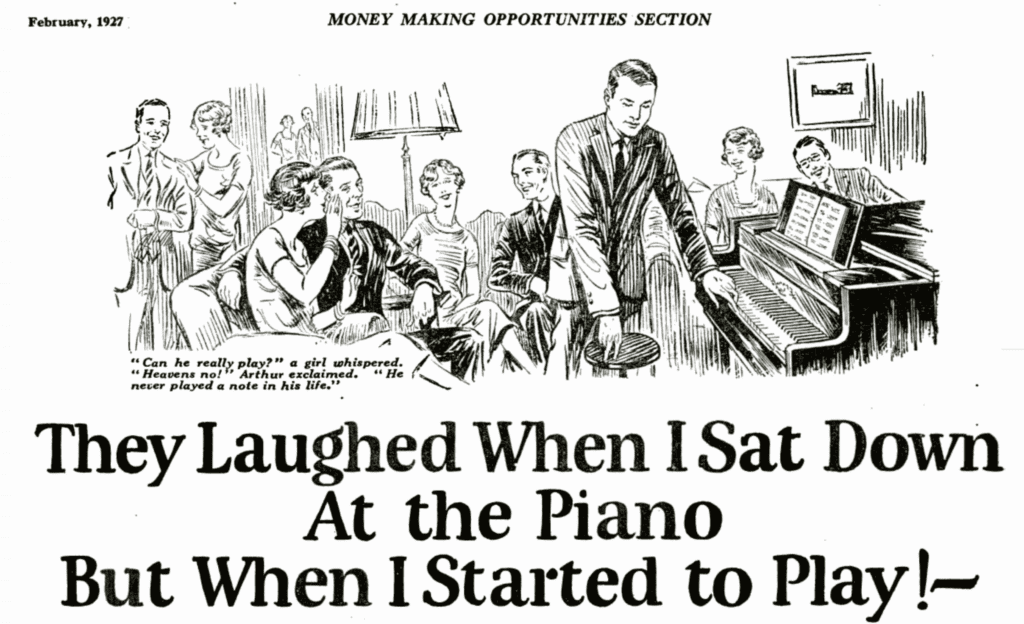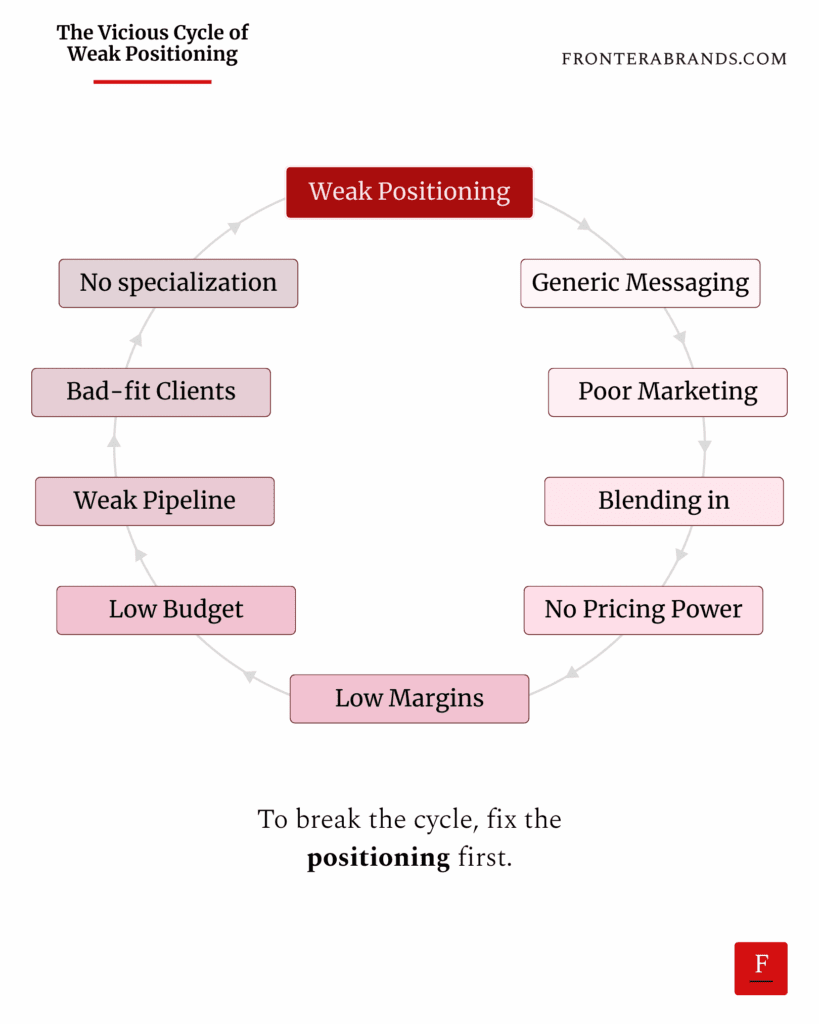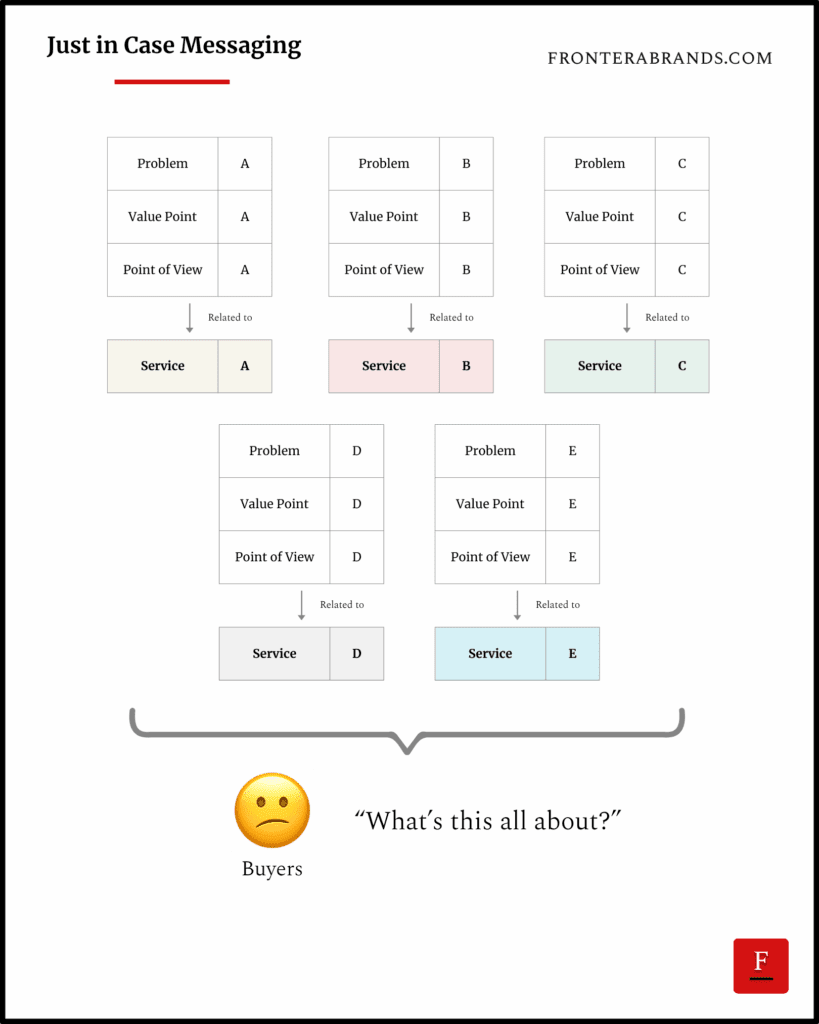♦️ 14 questions to audit your homepage messaging (before it silently kills sales)
|
You know this as a buyer. When you plan to buy a B2B service, you go to that brand’s website. You read the homepage. You try to understand what they do, how they do it, and how they are different. And based on what you see, you form an opinion and make a decision: to take the next step with that brand or not. Well, your potential buyers do the same too. That’s why your home page is important. It’s not a conversion-first channel like a landing page. But it’s more of an introduction and credibility channel, depending on that potential client’s buying stage. So yes, what you say and how you say it on your homepage can make or break your business. What’s tricky is when it doesn’t work, you don’t notice it immediately. It’s silent. You just see some bounces in your analytics tool, but that’s it. Nobody shows you a “lost revenue” alert. But you do lose revenue if your homepage is weak. You only notice the problem after you realize many prospects come to your sales calls confused about what exactly you provide or how you are different. And at that moment, you also realize many other prospects who visit your site don’t contact you because they don’t understand your brand’s value or misunderstand it. If you want buyers to choose you, your homepage has to do a few key things. Here are 14 of them as a checklist, so you can assess yours:
Have an honest look at your home page from a new visitor’s perspective and go through the checklist. If you’ve answered “no” to most of these questions, it’s not only your copywriter’s fault. As you can see, these points require clarity about your brand’s positioning and messaging first. And that’s the founder’s and executive team’s job. Without that clarity, your home page can’t turn visitors into clients. There is a reason why “home page copy” comes last in our Profit-Led Branding Framework. Because only a solid strategy and clarity around your positioning make tactics meaningful. Strategy first, tactics later. So remember, your homepage is speaking to your potential buyers 24×7. The question is: what is it really saying? Does your B2B brand claim to be different by being "client-centric", "result-oriented", and offering "tailored solutions"? Good luck.You’re great at what you do. Your clients love you. But new prospects? They don't get it. They don't see what makes you different from your website, ads, or content. So they go with the big, familiar firms as the "safe" choice. You know why? Because your value is only as good as your messaging. If your website, ads, or content don't clearly show how you're different, prospects won’t see it. You become just another provider. And that costs you sales without you knowing — every single day. We help B2B businesses get clear on what makes them different and convey that value with compelling messaging. So your website, ads, and content don’t just perform better — they sell. Want to stop losing sales to weak messaging? Fill out this form, let’s chat. You can reply to this email with your thoughts and feedback. I'd be happy to hear from you — I read and reply to all messages. And you can connect with me here on LinkedIn. Ozan |
Frontera
Join 10,000+ B2B founders getting the strategies of iconic brands.
In 1925, a rookie copywriter named John Caples had to sell something hard to sell: A mail-order piano course. He was barely a year into his job at the agency Ruthrauff & Ryan. The U.S. School of Music had knocked on their door. They wanted a campaign for their new self-study instrument courses. Caples needed an angle for his copy. Should he focus on how easy it makes learning? Should he focus on the lower price compared to hiring a tutor? Both were true. But none of it felt compelling. Caples...
Weak positioning causes a vicious cycle for every firm. It goes like this: You lack clarity around your ideal client profile, the specific problem you solve for them, and how you solve it differently. That causes you to have generic messaging. That causes your website, content, and ads to get ignored. That causes buyers to see you as interchangeable with hundreds of other firms. That causes you to lack pricing power. That causes you to have low margins. That causes you to have a low budget...
Boutique consulting firms make most of their revenue from a single service. But that core service gets only a tiny share of their messaging. You know why? Because they fear losing out. “What if somebody is looking for our other offers?” “What if we miss an opportunity?” So they list 10 services on their websites. Their content talks about 10 different value points related to different services. They hedge. But this ‘just in case’ messaging kills sales. Warren Buffett has a quote I like:...


